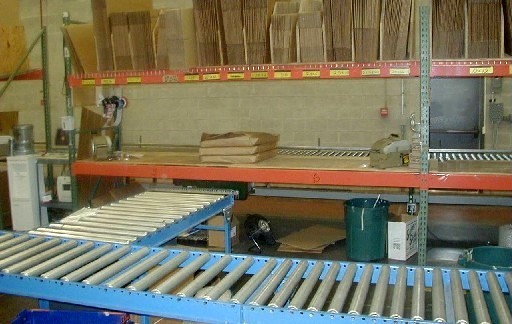 |
 |
|
|
Heavy gate |
Background
Conveyors and slides are effective, but tend to block access to work areas. A way to overcome this barrier is to use gates.
Unfortunately, many commercially available gates are heavy and cumbersome. Likewise, crossover bridges can be installed, but these do not allow passage for carts or lift trucks.
The following page provides ideas and options for providing improved styles of gates.
Ideas and Options
Spring or cylinder
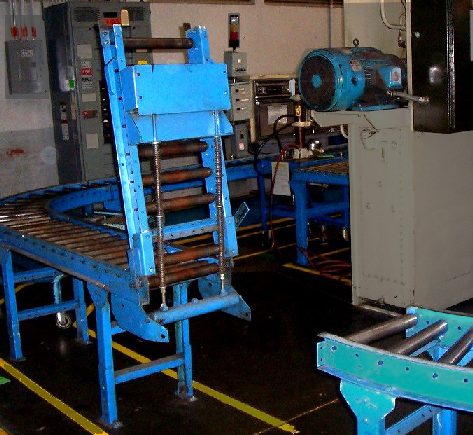 |
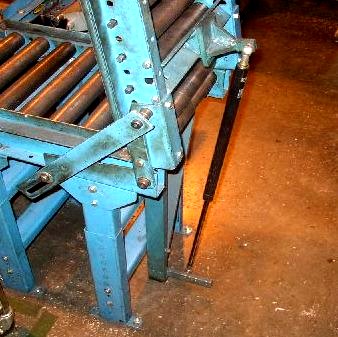 |
| Spring lift | Air cylinder lift |
The standard approach to gates is to use spring systems or air cylinders. When set up correctly, these styles of gates can be effective and problem-free. However, it is common for these gates to be heavy to open and close. Sometimes adding more springs or cylinders solves the problem, as can providing proper maintenance.
Crossover
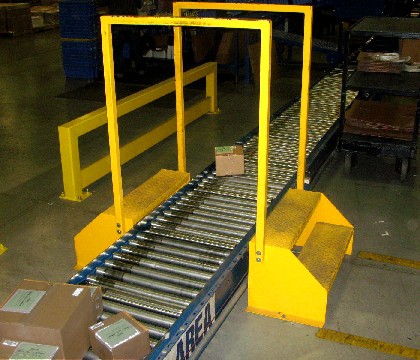 |
| Crossover |
It is also common to build crossover bridges. Crossovers can be the only feasible solution for large belt conveyors and when there is a high flow of materials along the line. However, crossovers require additional floor space, can be inconvenient to go up and down continuously (especially when carrying items), and do not allow passage of carts or material handling trucks.
Counterbalance
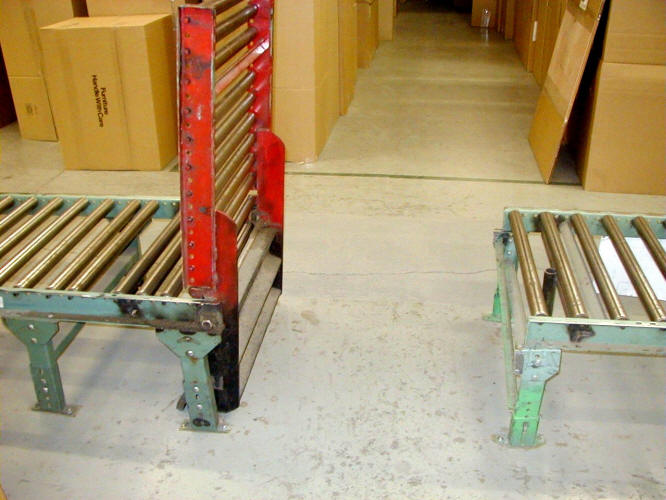 |
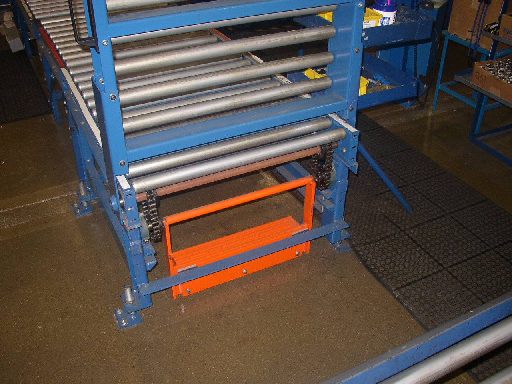 |
| Homemade counterbalanced gate | Commercially available counterbalance |
A technique that is often overlooked is to use a counterbalance, which can be both inexpensive and very effective. The gate shown above left was homemade and was so perfectly balanced that it could be opened and closed literally with a single finger. The photo above right shows a counterbalanced gate that is commercially available.
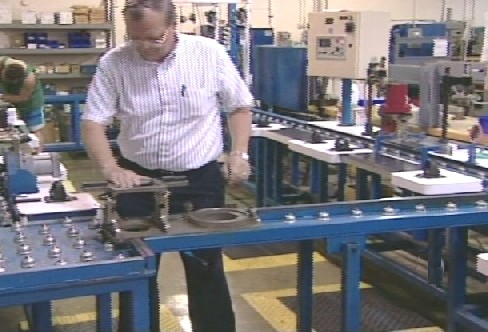 |
 |
| Conveyor halves as counterbalance (click for video tape) | |
This variant uses half of the conveyor section itself as the counterbalance, with the hinge on a support stand in the middle.
Roll-outs and swing-outs
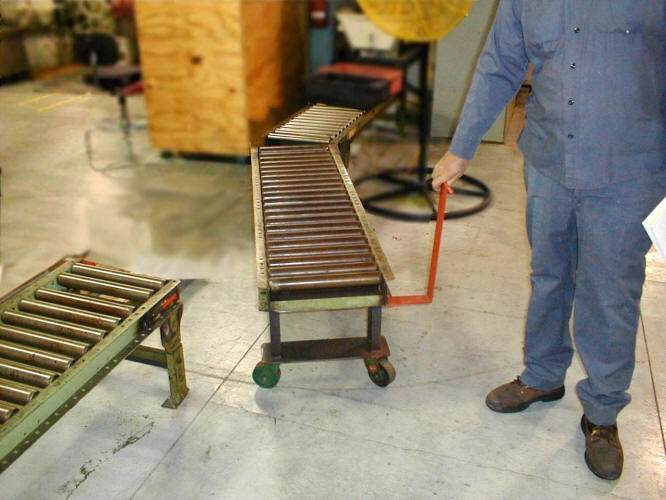 |
| Roll-out conveyor gate |
Another neglected technique is to install a roll-out or swing-out section to the conveyor. A particular advantage of this approach is that a long section of conveyor can be opened, which can permit passage of large lift trucks or large loads. In the photo above, note the handle, which eliminates need to bend to move conveyor.
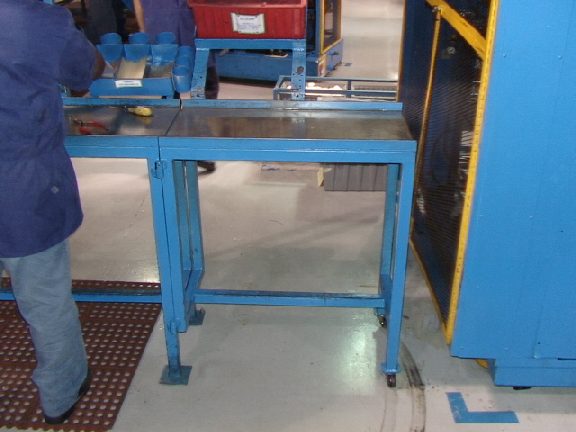 |
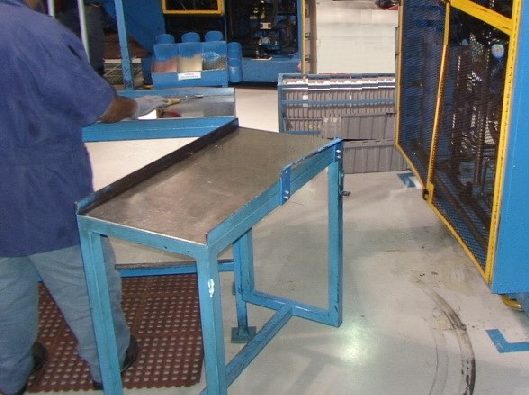 |
| Roll-out section of waist-high sliding/working surface | |
In the photos above, note the hinges on left-hand leg of movable section and wheels under right-hand legs.
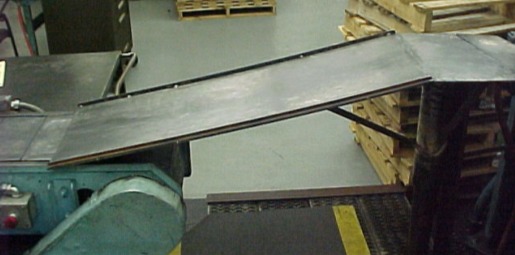 |
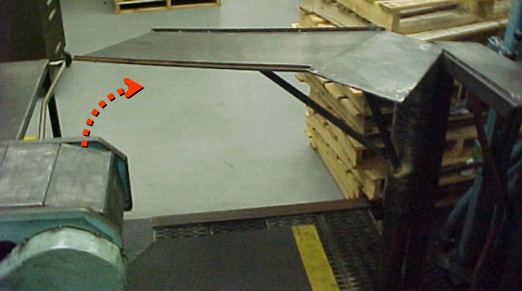 |
| Swing-out | |
A swing-out is similar to a roll-out, but is supported without the need for legs and wheels.
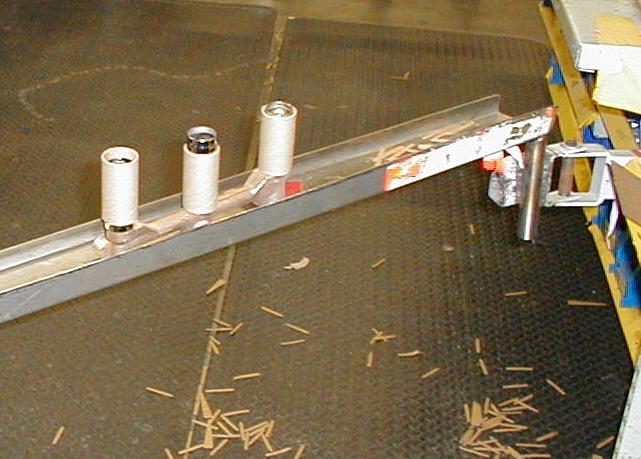 |
| Hinge on narrow slide |
One of the advantages of slides is that they can be made small and lightweight, which makes it easier to install gates and swing-outs.
Turnstile
 |
| Turnstile gate |
This variant has a conveyor section mounted on a rotating pedestal.
Ultra lightweight
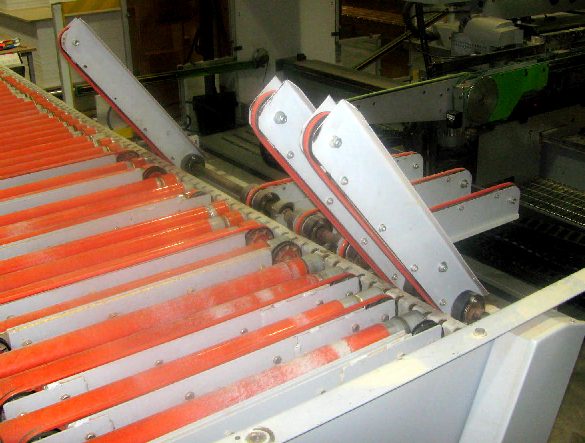 |
| Click for video clip of lightweight gate |
These gate sections are ultra light weight and can be opened and closed without use of any spring, cylinder, or counterbalance. The photo is of a large conveyor that feeds plywood sheets into a set of saws. These gates allow passage into the saw area and each of the several gate sections is opened separately. The same concept could be applied almost anywhere.
Retractable slide
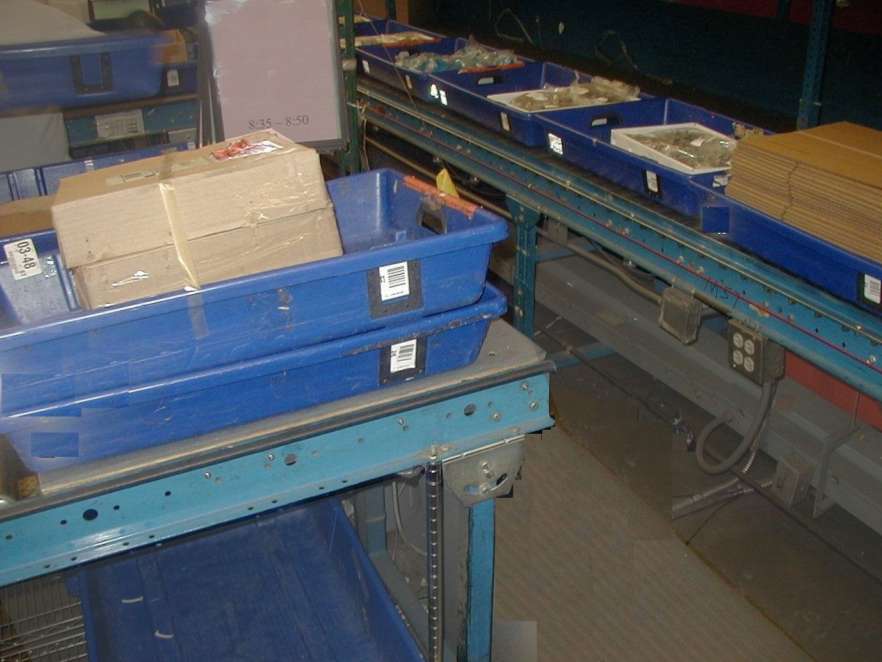 |
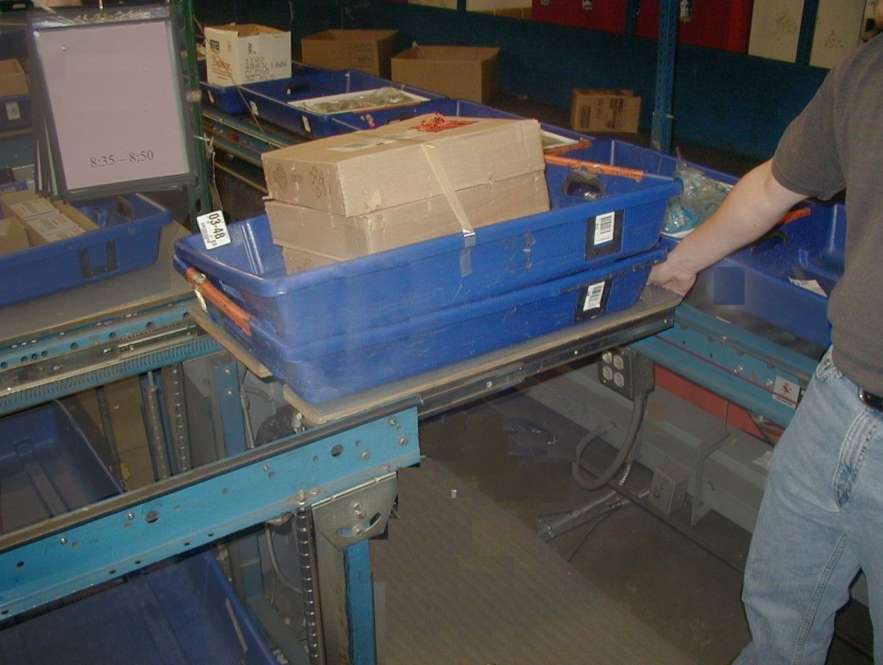 |
| Retractable slide | |
This unique set-up is pulled out like a drawer or retractable shelf. It includes a spring, so that it automatically closes after the employee slides the blue totes onto the far conveyor.
Gates for belt conveyors
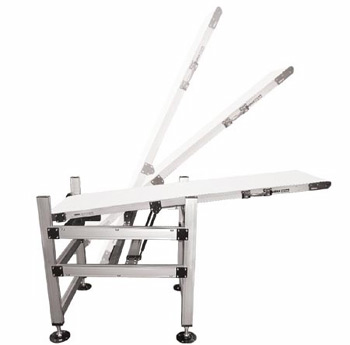 |
| Belt conveyor lift gate (www.dorner.com) |
Gates are usually more feasible for roller conveyors and sliding surface, but it is possible to use gates for belt conveyors.
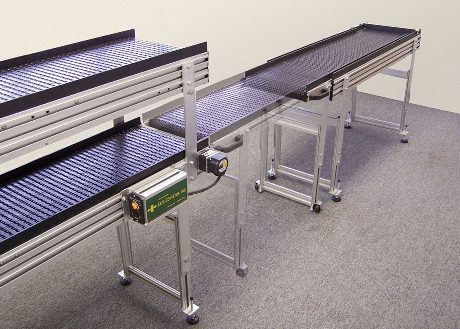 |
| Sliding conveyor gate (www.safeconveyor.com) |
The type of conveyor gate shown above is unique. No lifting is necessary — the gate section works like a sliding door.
